Snake plants are popular houseplants renowned for their robustness and low-maintenance nature. Nevertheless, they aren’t invincible, and occasionally, you might find your snake plant showing signs of distress.
This comprehensive guide will help you understand the common signs indicating your snake plant might be dying and how you can revive it.
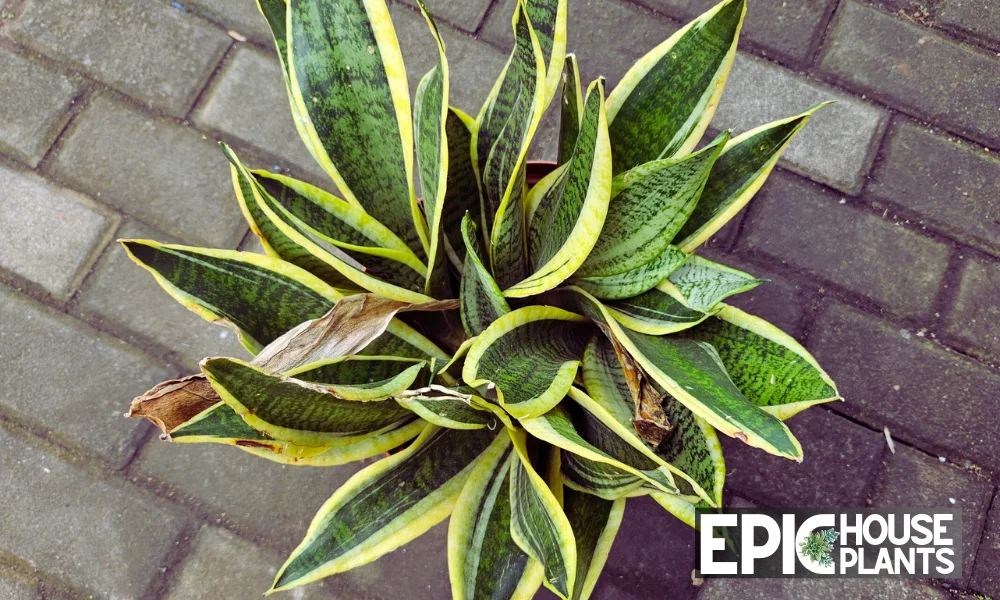
Signs of a Dying Snake Plant
Understanding what a healthy snake plant looks like can help you identify when something is amiss. Let’s examine some common signs of a dying snake plant and their possible causes.
Yellow Leaves: From Vibrant Green to Distress Signal
One of the tell-tale signs of a healthy snake plant is its vibrant green leaves. However, if you notice the leaves turning yellow, it may indicate a problem at the root level.
Snake plants have a unique root system designed to store water for periods of drought. However, if these roots are compromised due to overwatering or disease, they may cease to function correctly, resulting in yellow leaves.
Brown Spots on Leaves: Not a Beauty Spot
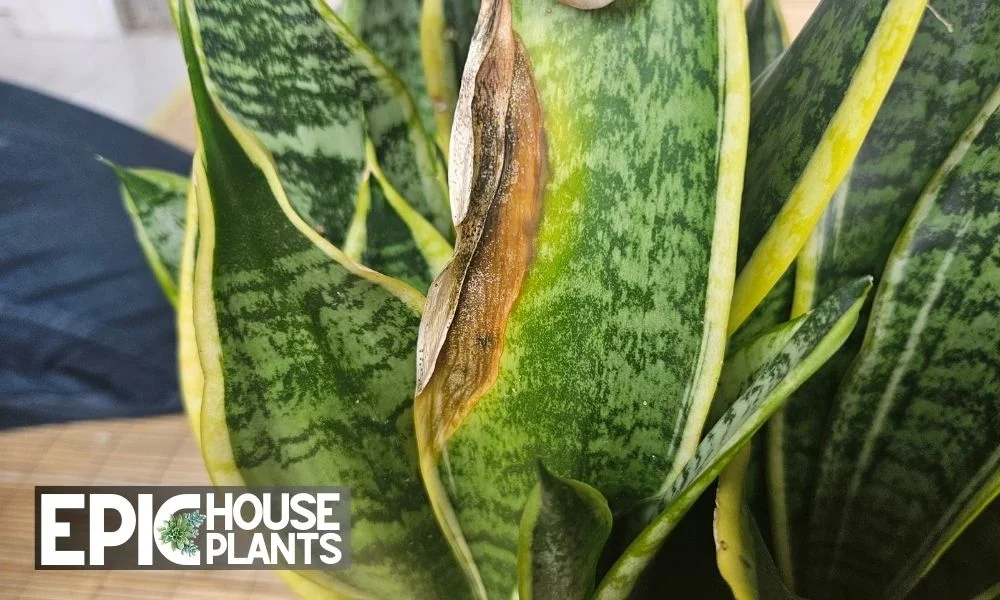
Occasionally, you may notice brown spots appearing on your snake plant’s leaves. This is not just an aesthetic issue but a sign of cell damage.
These brown spots often form when the food supply to a particular leaf section gets interrupted, causing the cells in that area to die. This can be due to various factors, such as overwatering, underwatering, or even pest infestation.
💡Also Read: Understanding what’s causing these brown spots can often be quite tricky. To help you get to the root of the problem, here’s an article on Snake Plant Brown Tips and How to Fix Them.
Drooping Leaves: A Cry for Help
While snake plants aren’t known for their erect posture, excessive wilting or drooping is a red flag.
This can happen due to various reasons, including underwatering, overwatering, or a lack of appropriate sunlight. It’s essential to identify the exact cause to provide the correct remedy.
Rotten Smell: More Than Just an Unpleasant Odor
A healthy snake plant doesn’t have a particularly strong smell. If you notice an unpleasant, rotten smell emanating from your snake plant, it’s usually a sign of bacterial rot.
Bacterial rot often occurs when the plant is overwatered, and the waterlogged soil becomes a breeding ground for harmful bacteria.
Mushy Roots: A Clear Warning Sign
If you’re comfortable handling your plant, gently removing it from its container and examining the roots can provide you with valuable information. Healthy snake plant roots should be firm and white or light tan.
Author Note:
If the roots are soft, mushy, or dark in color, it’s typically a sign of root rot, a serious condition that needs immediate attention.
In the next sections, we’ll delve into the potential causes of these symptoms and explore the steps you can take to save your dying snake plant.
Causes of a Dying Snake Plant
Here, we will explore several causes that might lead to a snake plant’s decline and provide actionable advice on how to counteract these issues.
1. Cold Temperature: The Chilly Downfall
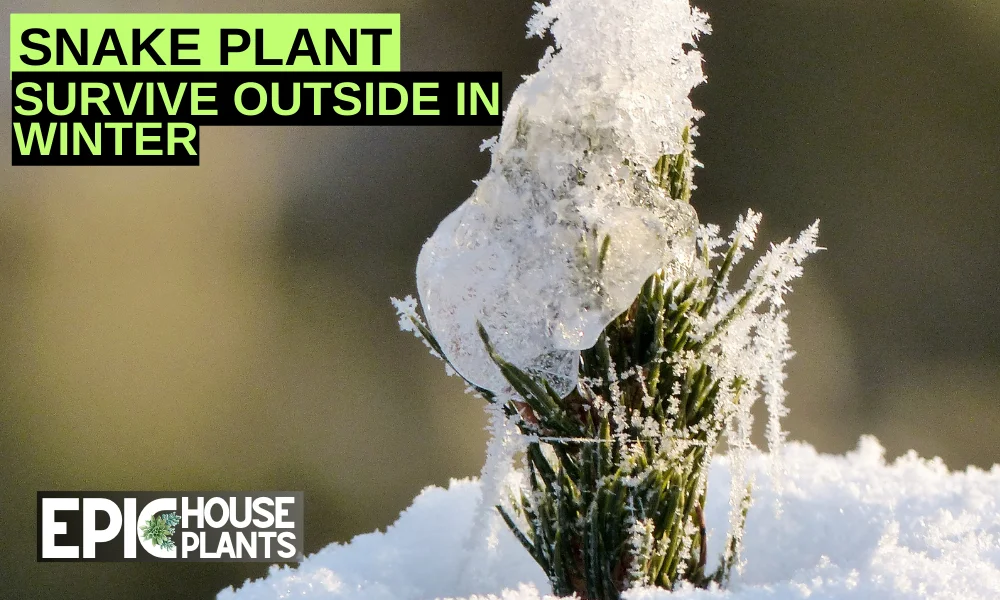
Snake plants prefer warmer temperatures to thrive, with their ideal range lying between 55 to 90 degrees Fahrenheit. If the temperatures drop below this range, your snake plant might experience stress.
Prolonged exposure to colder temperatures, especially frost, can freeze the cells of your snake plant, disrupting the flow of nutrients and water.
Signs of cold damage include:
- Drooping leaves
- Yellowing leaves
- Brown spots on the leaves
- Wilting of the leaves
To save a frost-bitten plant:
- Move your snake plant to a warmer spot (60 to 80 degrees F)
- Refrain from watering until the plant recovers
- Cut back the damaged leaf blades with sterile pruners to prevent further damage
Author Note:
Preventative measures include moving your plant indoors during cold weather. Recognizing the signs early and knowing how to respond can help your plants recover and thrive.
2. Lack of Sunlight: Light It Up!
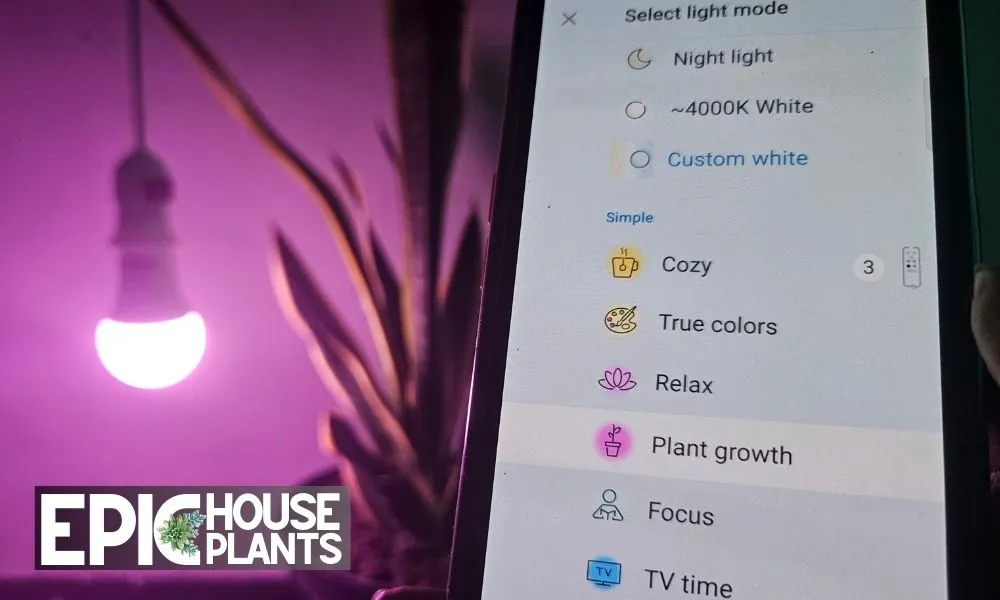
Contrary to popular belief, snake plants, though tolerant to low light, do require a fair amount of light to grow healthily.
Light fuels the photosynthesis process, which helps plants generate energy. In the absence of adequate light, snake plants gradually weaken.
Symptoms of insufficient light include yellowing leaves, stunted growth, and droopy leaves. To fix this:
- Move your snake plant to an area with ample light.
- Ensure your plant gets the right amount of light without causing light burn.
Solutions: Consider using artificial lighting for your snake plant if there isn’t enough diffused natural light in your space. For more details on how to light up your snake plant correctly, check out this informative article on Snake Plants Lighting Requirements.
3. Overwatering: A Common Mistake
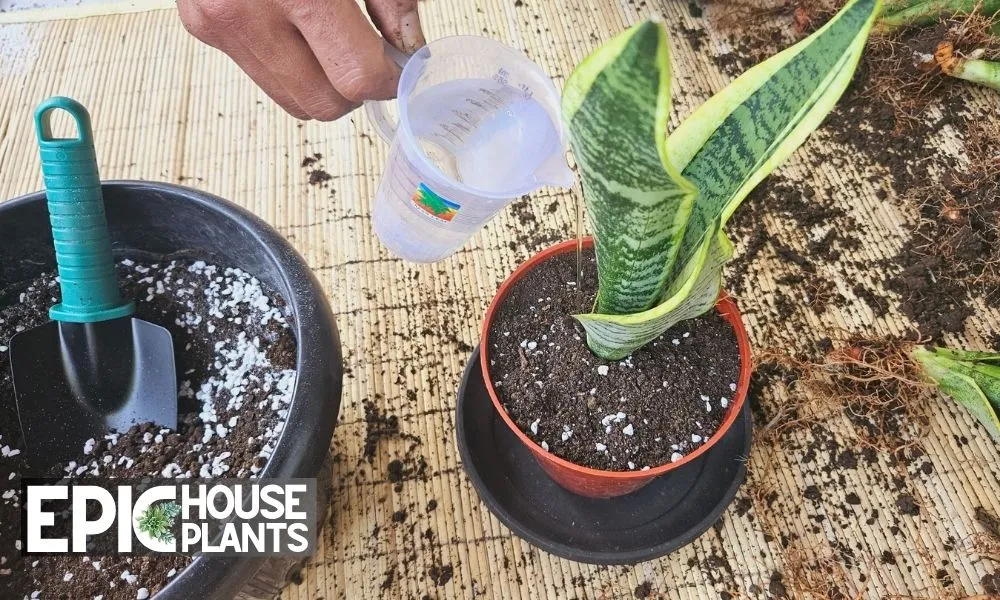
Overwatering is one of the primary causes of a dying snake plant. The plant’s roots are prone to rot if exposed to too much water, especially during winter.
Symptoms include browning or pulpy leaves, yellowing, wilting, and a rotten smell emanating from the soil. If your plant shows these signs:
- Consider repotting your snake plant with fresh soil. Learn how in this detailed guide on repotting a snake plant.
- Remove the rotten roots using sterile pruners to prevent further damage
Prevent overwatering by using well-draining potting soil and watering only when the soil is completely dry.
4. Fungal Infection: Unseen Dangers
Fungi such as Phytophthora and Pythium often cause root rot. These fungi thrive in waterlogged soil.
Symptoms of fungal infection include yellow and brown leaves, mushy soil, and black or brown roots. If your snake plant has a fungal infection:
- Remove your snake plant from its pot
- Get rid of as much unhealthy soil as possible
- Cut off the infected roots with a sterile pair of scissors
- Sprinkle sulfur powder over the healthy roots to prevent reinfection
- Repot your snake plant using fresh potting soil
Watering your snake plant only when the soil is completely dry helps prevent fungal infection.
5. Low Humidity: The Invisible Enemy
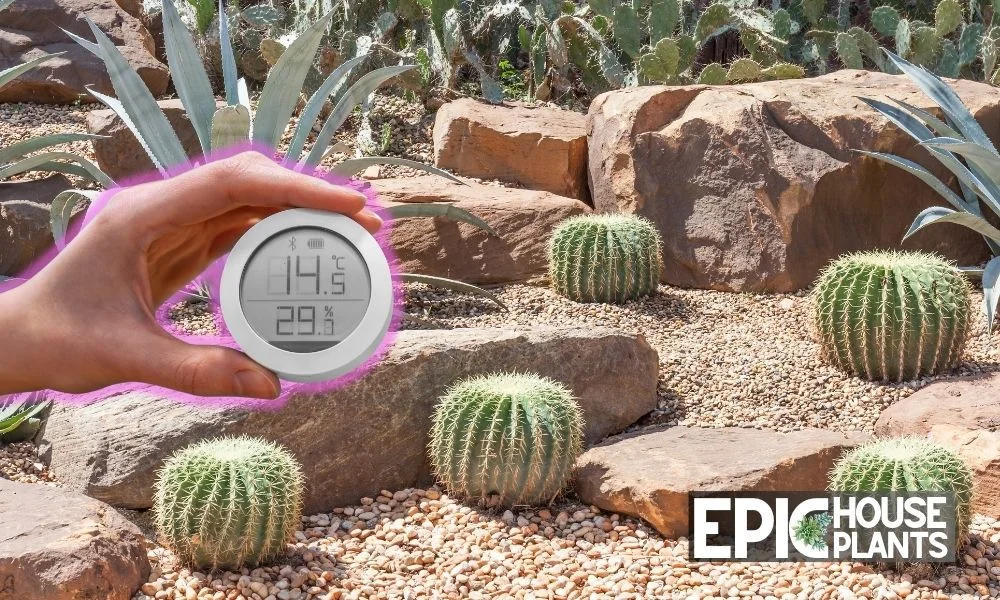
Humidity plays a significant role in the health of a snake plant. The ideal humidity level for this plant is between 35%-45%. When the air is too dry, the plant may lose water more quickly than it can replace it.
Symptoms of low humidity include dry soil, yellowing, brown leaf tips, curling, wilting, and wrinkling leaves. To counteract low humidity:
- Invest in a quality humidifier
- Put stones in the plant saucer and add water
Avoid placing the plant near heating or cooling vents to maintain appropriate humidity levels.
💡Also Read: For further reading on issues related to the snake plant, consider checking out these articles: Snake Plant Leaves Splitting: What’s Happening and Why
6. Bacterial Infection: The Invisible Enemy

Bacterial infections, particularly from Erwinia carotovora, can have severe implications for your snake plant. These bacteria usually attack the plant’s roots, leading to rotting and degradation.
The signs of a bacterial infection include yellowing, wilting, or drooping leaves, which eventually turn mushy.
Also, you may notice a rotten smell due to the bacteria. Unfortunately, in most cases, the best course of action is to discard the plant as there’s currently no cure for this condition.
Preventative measures include using sterile potting soil and never reusing the growing substrate or adding the infected plant to the compost heap.
7. Lack of Nutrients: The Silent Killer
Snake plants, although hardy, can suffer from prolonged nutrient deficiency. Sometimes, a condition known as root bound can cause the lack of nutrients.
Signs of nutrient deficiency include stunted growth and yellow leaves. If your snake plant lacks nutrients:
- Apply a suitable fertilizer
- Add nutrient-rich soil to the pot
Consider repotting your snake plant every 2-3 years to prevent root binding. For advice on the best soil for snake plants, this comprehensive guide on the 7 Best Soil for Snake Plant will be helpful.
8. Pest Affecting: The Tiny Terror
Pests such as mealybugs and spider mites can significantly affect the health of your snake plant.
These pests are typically found in leaves curling towards the soil top, where they form large colonies. They feed on the plant’s fluids, excreting sticky honeydew on the foliage.
Symptoms of a pest infestation include stunted growth, leaf necrosis, discoloration, wilting, and curling. To combat this:
- Clean the infested areas with a cotton ball dipped in an alcohol solution
- Use a horticultural oil spray or a neem oil solution to kill any remaining mites
Inspect your plant regularly for signs of infestation and act quickly if needed. Quarantine infected plants from healthy ones to prevent the spread.
How To Save A Dying Snake Plant after Repotting
If you recently repotted your snake plant (Dracaena trifasciata) and it now appears to be dying, it could be due to a variety of factors.
For example root shock, overwatering, underwatering, inadequate light, or even diseases or pests. Here are some steps you can take to revive your snake plant:
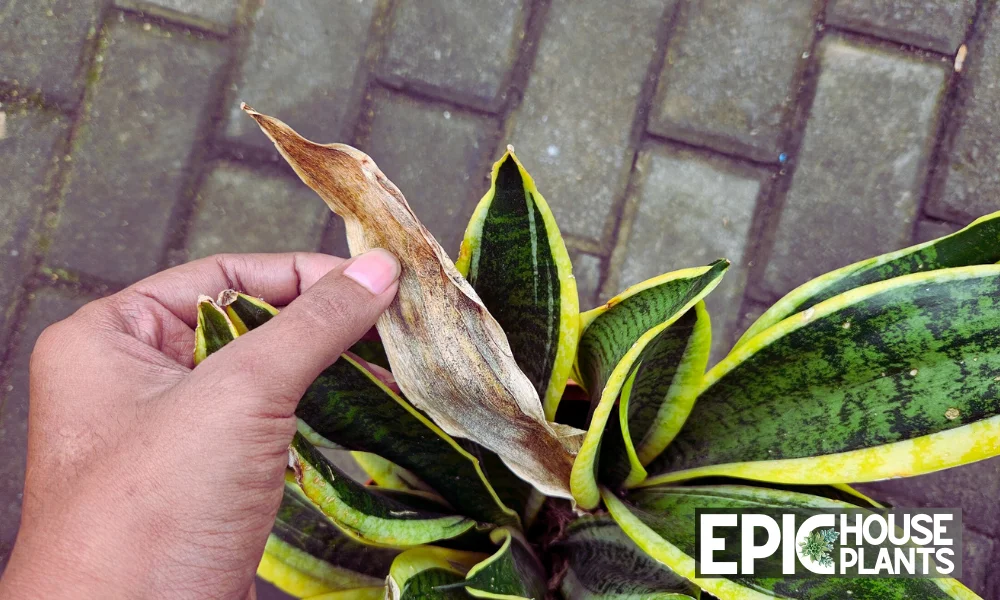
Check for Overwatering or Underwatering:
These are the most common issues with snake plants, especially after repotting. If the leaves are brown, it might be a sign of overwatering or too much sunlight.
You should move the plant to a location with indirect sunlight and reduce watering. If the leaves are yellow, this could indicate underwatering or inadequate light.
The solution here would be to water the plant more often and ensure it is getting bright indirect light.
Inspect for Root Rot:
Soft and mushy roots could be a sign of root rot, primarily caused by overwatering. If this is the case, trim the affected roots and repot the plant with fresh soil, and adjust your watering routine.
Assess for Diseases or Pests:
Drooping leaves may be a sign of root rot or a response to cold drafts. Similarly, falling leaves might indicate pests or diseases. It’s important to identify and eliminate pests or diseases if these are the problems.
White spots on leaves can be caused by powdery mildew, a fungal infection, which can be treated with fungicides like neem or lavender oil.
Environmental Adjustments:
Curling leaves can be due to environmental changes, overwatering, or pests. Adjust your watering frequency and improve humidity levels in the plant’s environment.
You could also consider treating the plant for root rot if that’s the identified problem.
Consider Propagation:
If all else fails, you might consider propagating a new Snake Plant from leaf cuttings or acquiring a new plant.
It’s important to intervene quickly, and if you don’t see any improvement after a week or two, it may be necessary to explore these alternative options.
Author Note:
Always remember that plants often experience some stress after being repotted, and it may take some time for them to adjust to their new environment. The key is to provide the right care and conditions for your snake plant to thrive.
Author

Pudji Haryanto
Pudji Haryanto is a writer and urban farmer with a passion for cultivating plants. He has over 15 years of experience in agriculture and currently manages a 65,000 square foot rice-field and yard filled with various plants, including vegetables, spices, flowers, and garden plants.
